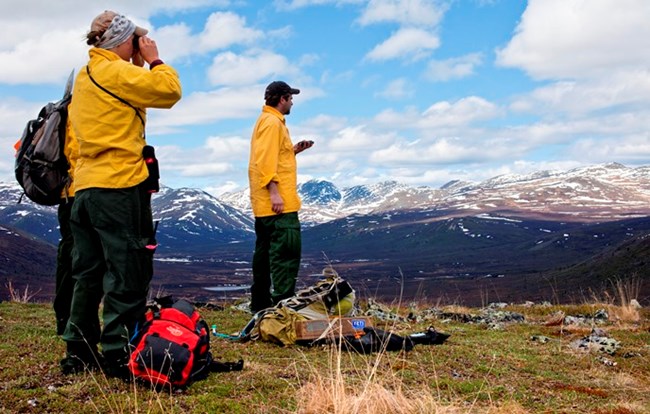
NPS/Greg Kinman In early June, I was stationed out of the Yukon-Charley Rivers National Preserve headquarters in Eagle, Alaska. I did many things during that short time, and photographed many more, but by far the highlight of the trip was the three-day stint I spent with the preserve's archaeology crew. The crew was in the middle of their annual two-week helicopter survey. For fifteen days straight, they flew out each day, landing on unimproved sites that are only accessible (in a timely fashion) by helicopter, such as flat ridges and gentle slopes vegetated primarily with dry, mossy tundra. While at these sites, they slowly walked around the tundra, keeping an eye out for stone tools and flakes that would have been used by ancient Alaska Native caribou hunters. The main goal was to learn more about the migration patterns and lifestyles of the natives in an effort to learn more about what Interior Alaska was like before Western contact. 
NPS/Greg Kinman 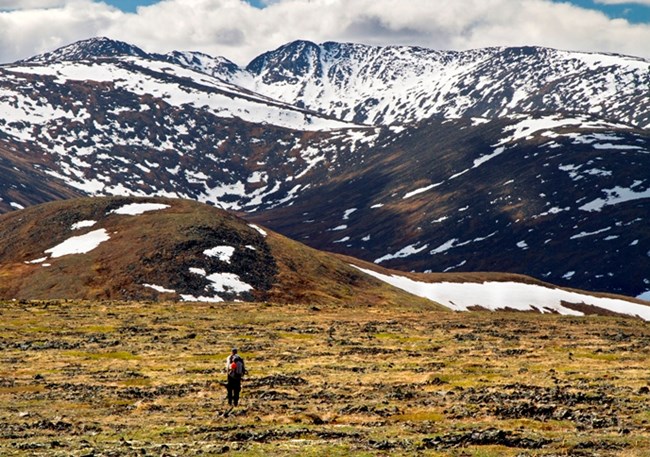
NPS/Greg Kinman 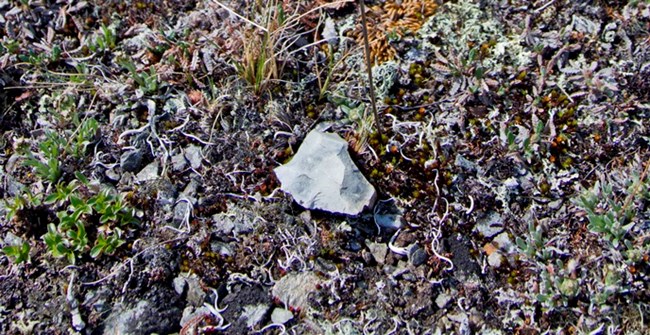
NPS/Greg Kinman 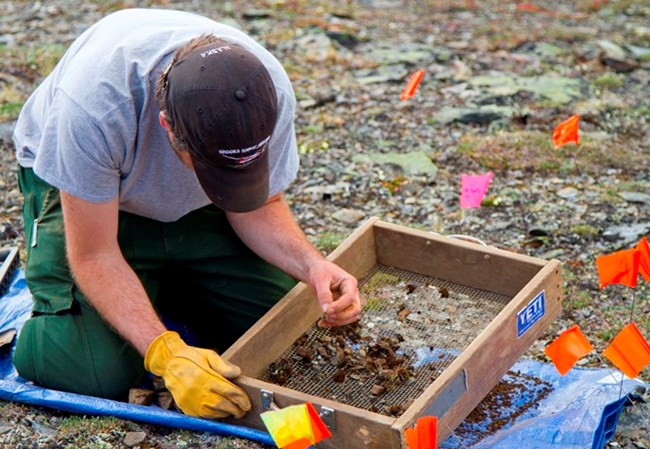
NPS/Greg Kinman 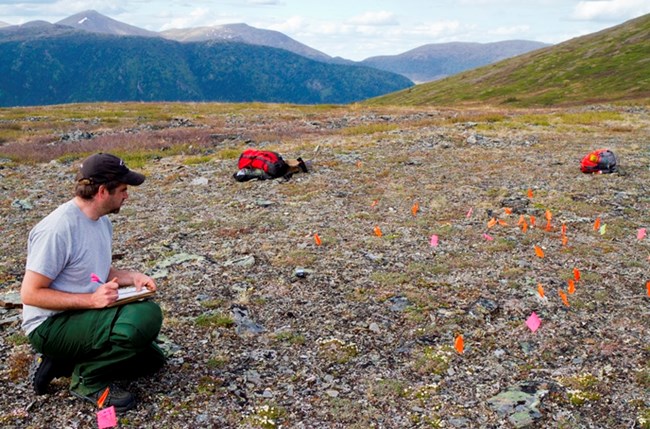
NPS/Greg Kinman I had a wonderful and enlightening three days with the crew; I learned a great deal about the rich cultural and archaeological history in the preserve, and the new knowledge further inspired me to accurately and artfully portray the preserve through my photographs in such a way that would inspire others to conserve it.
|
Last updated: April 14, 2015
